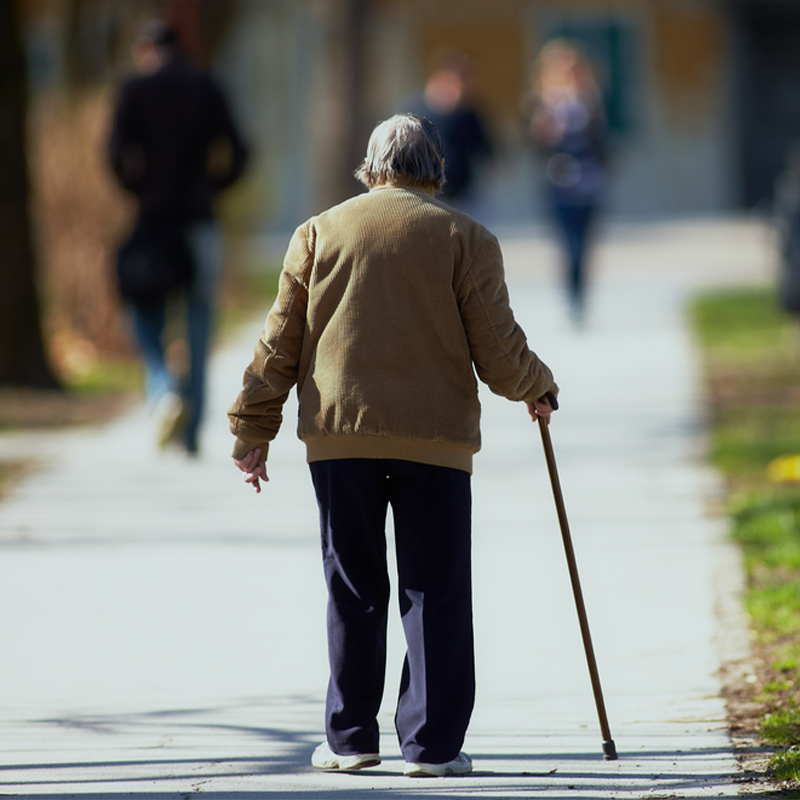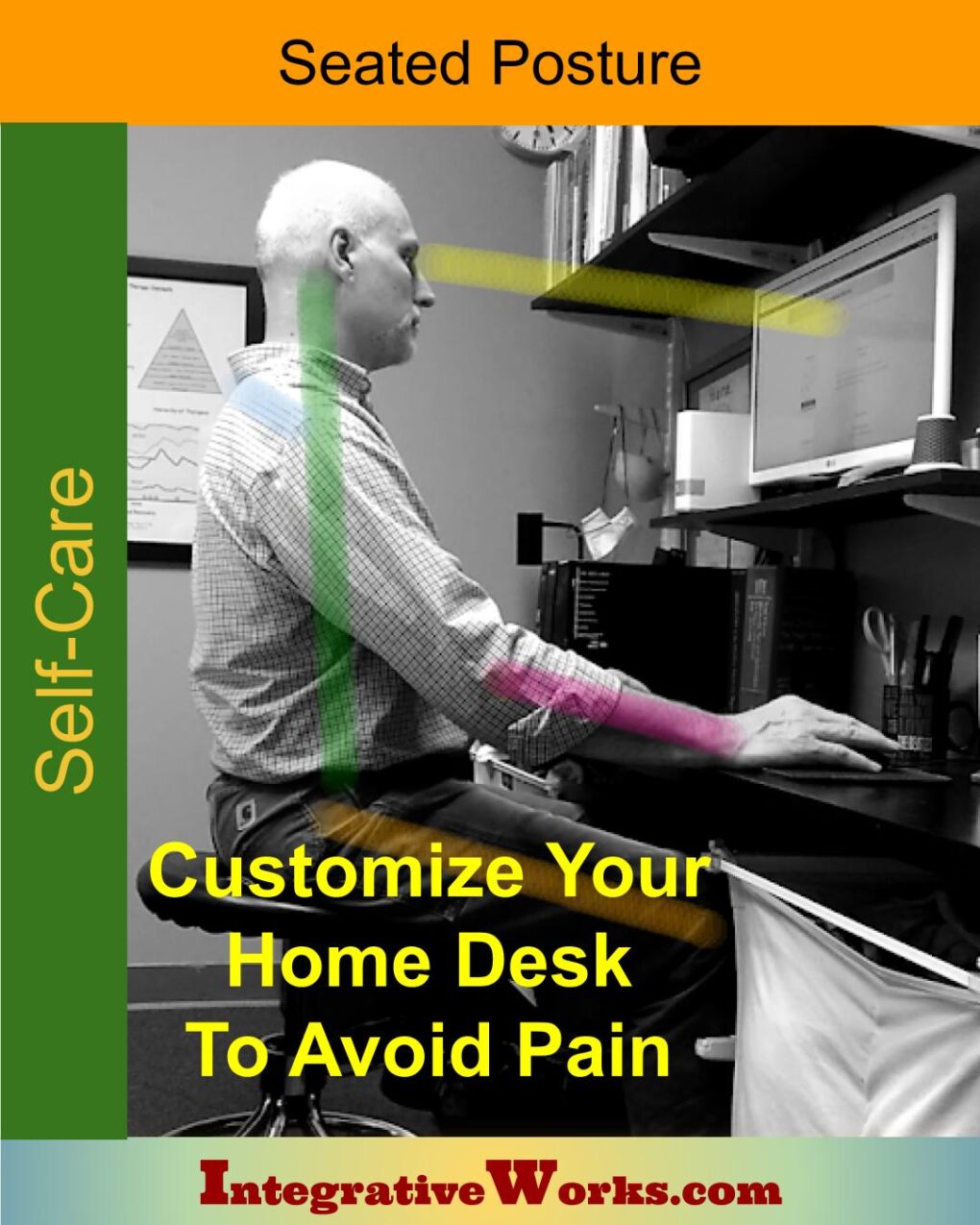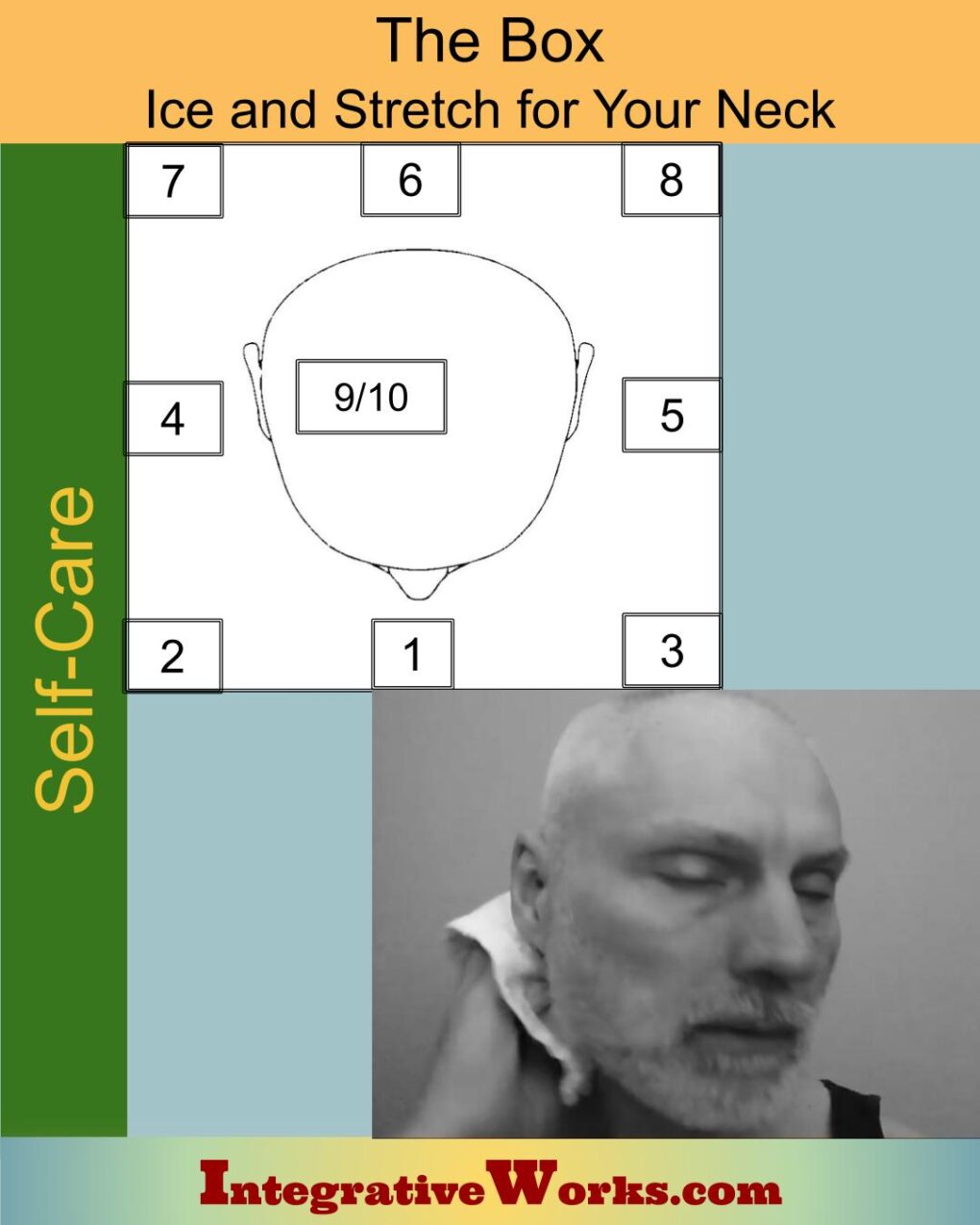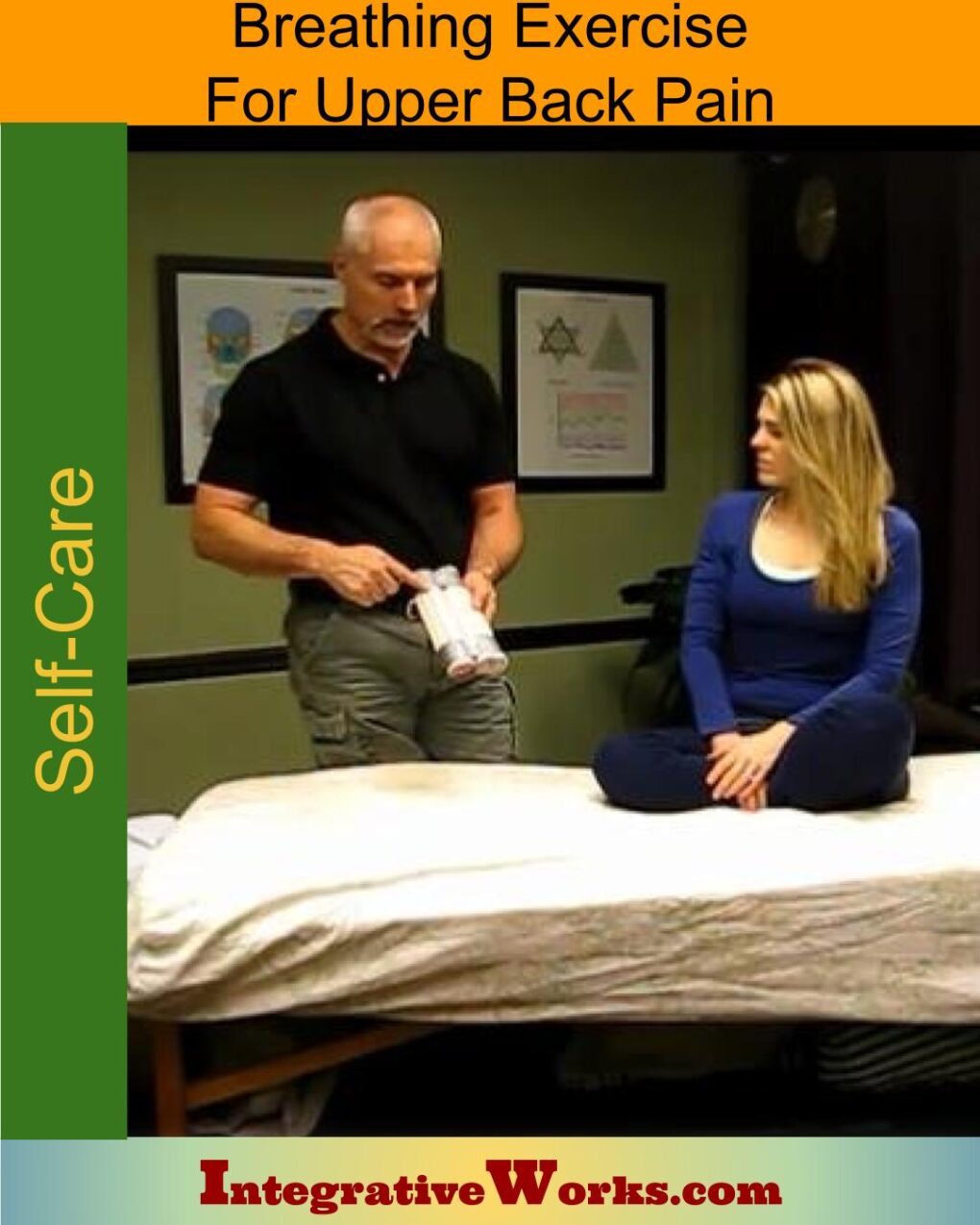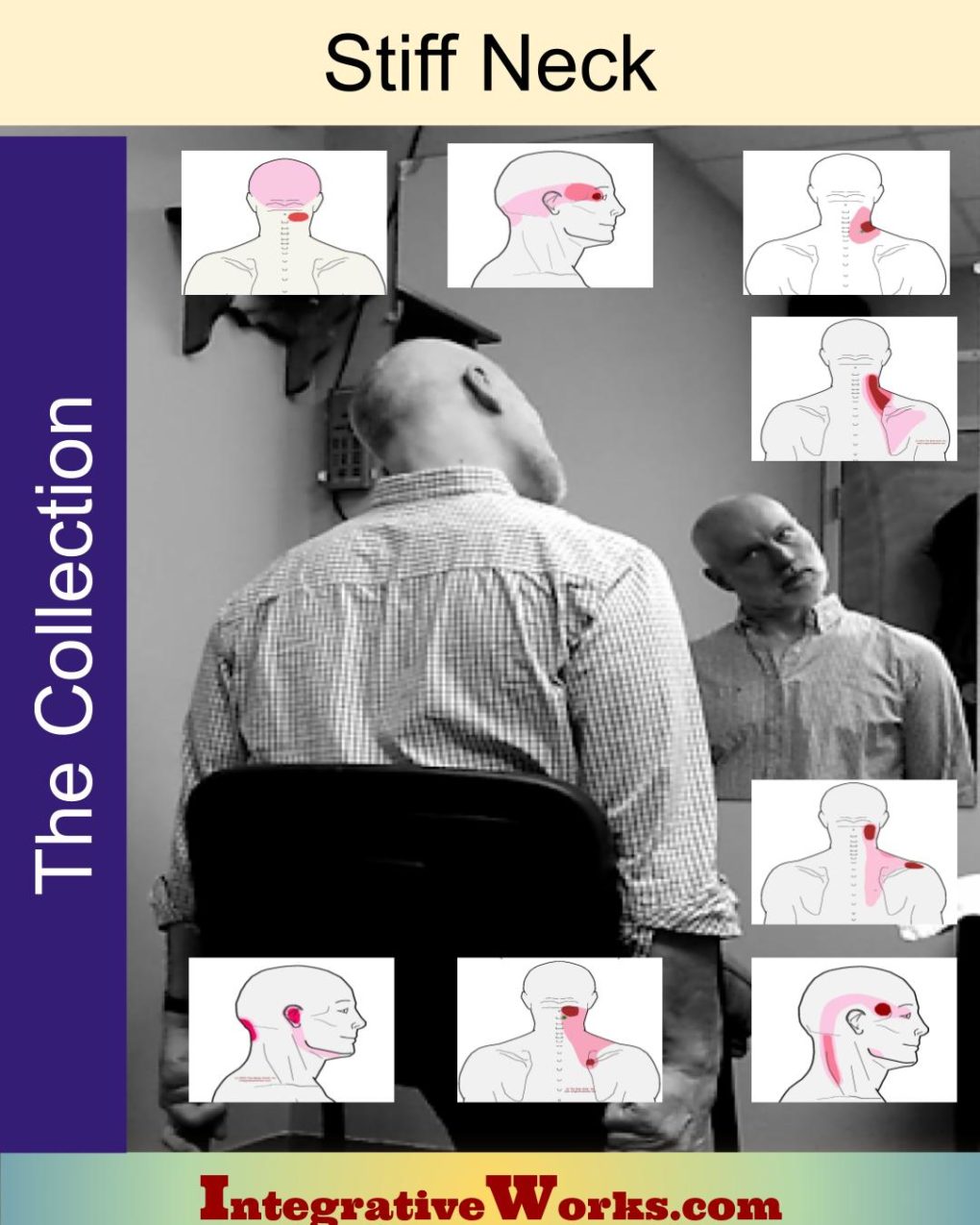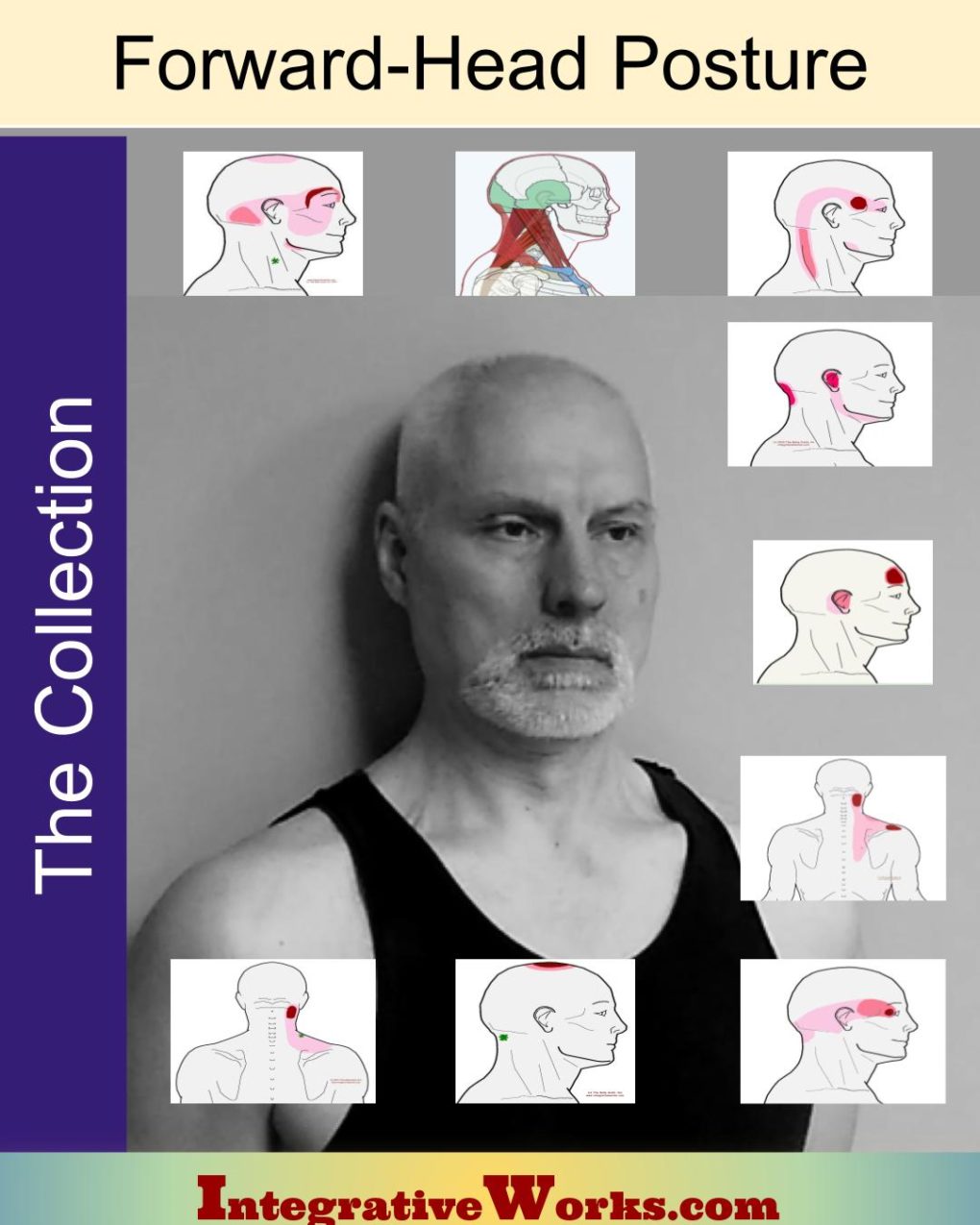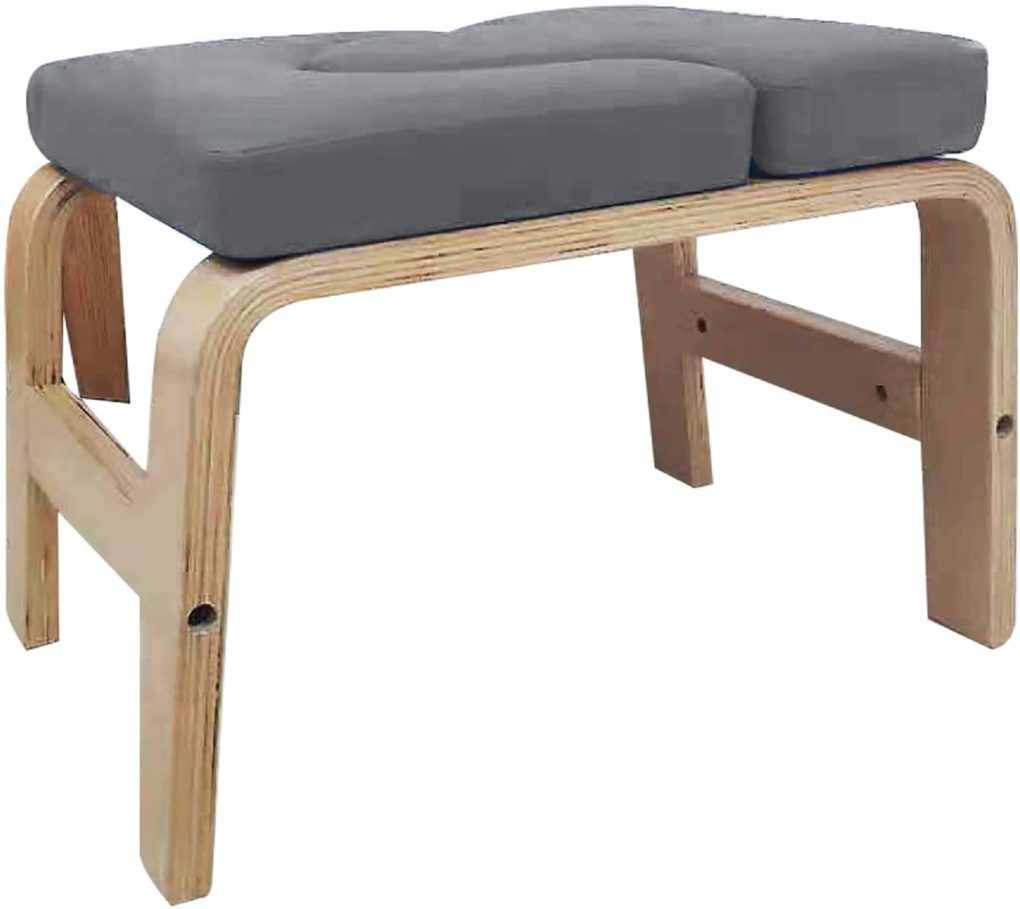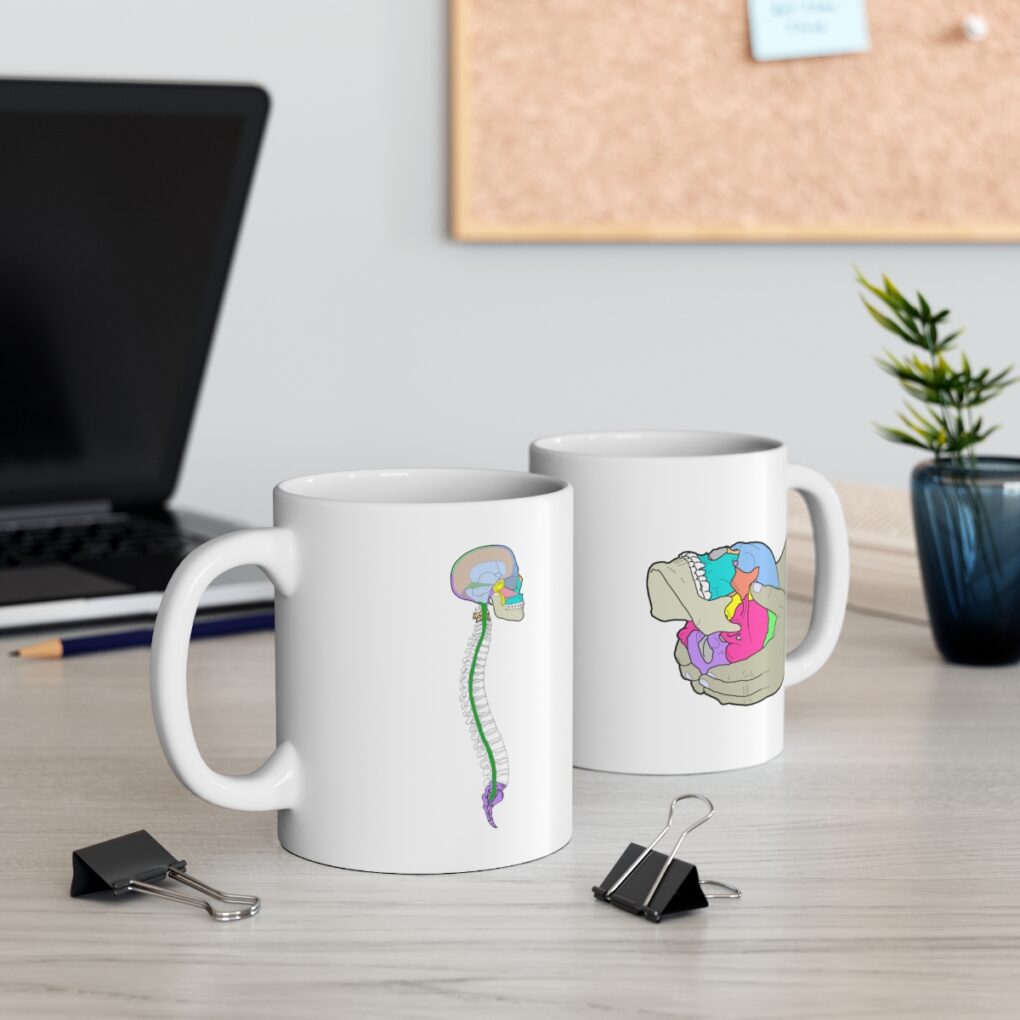Table of Contents
- Activities to Avoid or Change
- For Temporary Relief
- Stretches and Exercises for Longer-Lasting Relief
- Yoga Corner
Self-Care for this stiff pain at the base of the neck can be quick and effective when the person is active and healthy. During the stretching, this person often gets a shift in their neck. For the older or less-active person, this requires some relief strategies with more persistent stretching. For more information about this stiff pain at the base of the neck while turning, see this other post.
Activities To Avoid or Change:
Sleeping
Suggestions for corrective actions focus on avoiding activities that twist the neck while you are chilled, or your head is pulled forward. People awaken with this problem while sleeping with their heads twisted, especially in a cold or drafty room. They may report aggravating it while picking up something with one hand while their head is twisted.
Wobbly Gait
Walking with an imbalanced gait, especially with a cane, aggravates this stiffness at the base of the neck. Just this week, I had a client who came in after a visit to her orthopedist. She had a cane after having fluid drained off her knee. As with others, one of my first suggestions is that she visits her PT or finds web pages that teach her how to use her cane correctly. An improperly used cane often creates neck and shoulder problems.
Similarly, one client complained that he got this from holding onto the treadmill with one hand. Treadmill websites often list this in the top 10 problems.
Change your seated posture:
Improve the ergonomics
at your home or office.
This post offers some great ideas for actively sitting without support or sitting with supports that help you avoid pain and fatigue. There are also suggestions about a few useful accessories.
For Temporary Relief:
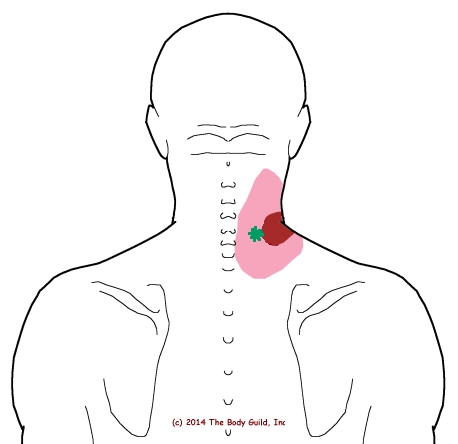
Pain Patch Placement
Place one of the small Salonpas patches right on the green asterisk where it hurts. They’re available at every drugstore and even cheaper on Amazon.
But, Consider This
Some people get better results by putting the patch across the center of the top of their neck, where most of the rotation occurs. The patch will loosen the whole area so that all of the muscles work and become better balanced. Gentle tilting and turning your head from side to side loosen the joints so that the muscles relax.
These self-care activities, like over-the-counter drugs, are not intended to replace appropriate medical attention. If you have concerns about these self-care activities, get help from a professional. Use these suggestions and strategies with discretion and at your own risk. See your doctor when your pain is severe, persistent, or not responding to these simple suggestions.
Stretches and Exercises for Longer-Lasting Relief:
Balanced Stretching Routine
The first line of defense is to stretch the muscles and loosen the joints in the neck.
Stretching the top of the neck will loosen the atlantoaxial joint. Notably, this joint is key to releasing any stiffness-related pain pattern while turning your neck.
Stretching the bottom of the neck will be more tender. Focus on gentle stretches with extra repetitions while extending the head up and away from the shoulders. This often releases with a little click.
Breath of Relief
The splenius cervicis muscle originates in the upper back. This exercise releases stuck rib heads around those vertebrae. Further, it loosens vertebrae that are fixated. Those fixations in the upper back joints maintain tension in this muscle, especially around T4.
Is Your Neck Extra Stiff and Painful?
Sometimes, turning your head is strongly limited by pain. This indicates that more than one of the muscles that creates a “stiff neck” is involved. Check out these posts on a stiff neck.
In this case, if the problem does not resolve with home care, consider professional help from your bodyworker. They will offer quicker relief, have longer-lasting results, and keep you focused on effective self-care.
Do You Have Forward-Head Posture?
This muscle is often overstretched and overpowered by Forward-Head Posture. As the head moves forward, the opposing muscles become short and strong. Consequently, this muscle becomes overstretched and tight. Once the head has become imbalanced over the torso, this muscle fights to rebalance posture.
If you have Forward-Head Posture, review this collection, especially the self-care suggestions for changing your environment and the Tuck, Tilt, Turn, and Lift exercise.
I’d love your feedback on how this works for you and any suggestions you might have.
Email me at integrativeworks@gmail.com.
Yoga Corner
Avoid Headstands
Headstands can really aggravate this condition. Decompressing the lower neck and upper rib heads is key to deactivating this trigger point. If you insist on headstands, a solid headstand bench with good padding can help when you have warmed and opened the base of the neck for more than 8 minutes. Listen for little clicks around the top and base of your neck that release the pain pattern. Use the bench when it is not painful on the neck.
This headstand bench gets the best reviews on Amazon and will keep you from twisting and compressing this area.
Support Integrative Works to
stay independent
and produce great content.
You can subscribe to our community on Patreon. You will get links to free content and access to exclusive content not seen on this site. In addition, we will be posting anatomy illustrations, treatment notes, and sections from our manuals not found on this site. Thank you so much for being so supportive.
Cranio Cradle Cup
This mug has classic, colorful illustrations of the craniosacral system and vault hold #3. It makes a great gift and conversation piece.
Tony Preston has a practice in Atlanta, Georgia, where he sees clients. He has written materials and instructed classes since the mid-90s. This includes anatomy, trigger points, cranial, and neuromuscular.
Question? Comment? Typo?
integrativeworks@gmail.com
Follow us on Instagram

*This site is undergoing significant changes. We are reformatting and expanding the posts to make them easier to read. The result will also be more accessible and include more patterns with better self-care. Meanwhile, there may be formatting, content presentation, and readability inconsistencies. Until we get older posts updated, please excuse our mess.


